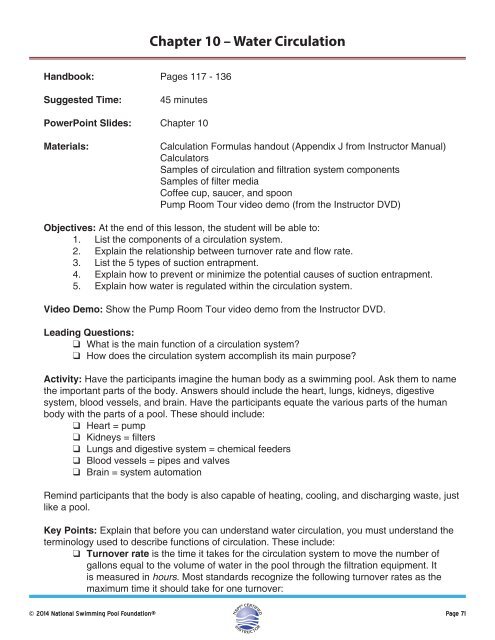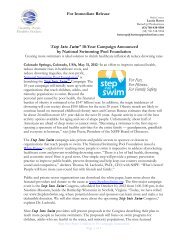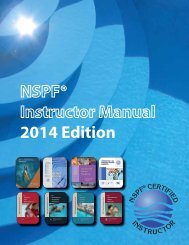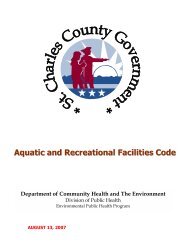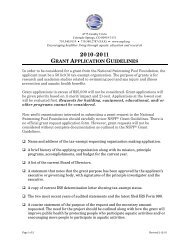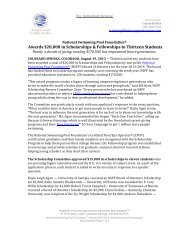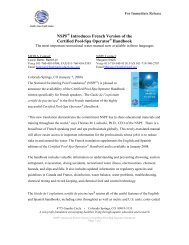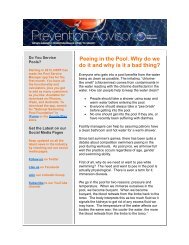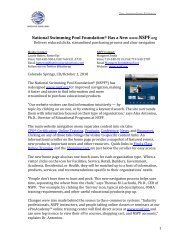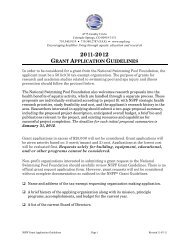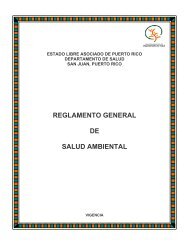English Instructor Manual (PDF) - Metric Version - National ...
English Instructor Manual (PDF) - Metric Version - National ...
English Instructor Manual (PDF) - Metric Version - National ...
Create successful ePaper yourself
Turn your PDF publications into a flip-book with our unique Google optimized e-Paper software.
Chapter 10 – Water Circulation<br />
Handbook: Pages 117 - 136<br />
Suggested Time:<br />
45 minutes<br />
PowerPoint Slides: Chapter 10<br />
Materials:<br />
Calculation Formulas handout (Appendix J from <strong>Instructor</strong> <strong>Manual</strong>)<br />
Calculators<br />
Samples of circulation and fi ltration system components<br />
Samples of fi lter media<br />
Coffee cup, saucer, and spoon<br />
Pump Room Tour video demo (from the <strong>Instructor</strong> DVD)<br />
Objectives: At the end of this lesson, the student will be able to:<br />
1. List the components of a circulation system.<br />
2. Explain the relationship between turnover rate and fl ow rate.<br />
3. List the 5 types of suction entrapment.<br />
4. Explain how to prevent or minimize the potential causes of suction entrapment.<br />
5. Explain how water is regulated within the circulation system.<br />
Video Demo: Show the Pump Room Tour video demo from the <strong>Instructor</strong> DVD.<br />
Leading Questions:<br />
What is the main function of a circulation system?<br />
How does the circulation system accomplish its main purpose?<br />
Activity: Have the participants imagine the human body as a swimming pool. Ask them to name<br />
the important parts of the body. Answers should include the heart, lungs, kidneys, digestive<br />
system, blood vessels, and brain. Have the participants equate the various parts of the human<br />
body with the parts of a pool. These should include:<br />
Heart = pump<br />
Kidneys = fi lters<br />
Lungs and digestive system = chemical feeders<br />
Blood vessels = pipes and valves<br />
Brain = system automation<br />
Remind participants that the body is also capable of heating, cooling, and discharging waste, just<br />
like a pool.<br />
Key Points: Explain that before you can understand water circulation, you must understand the<br />
terminology used to describe functions of circulation. These include:<br />
Turnover rate is the time it takes for the circulation system to move the number of<br />
gallons equal to the volume of water in the pool through the fi ltration equipment. It<br />
is measured in hours. Most standards recognize the following turnover rates as the<br />
maximum time it should take for one turnover:<br />
© 2014 <strong>National</strong> Swimming Pool Foundation® Page 71


